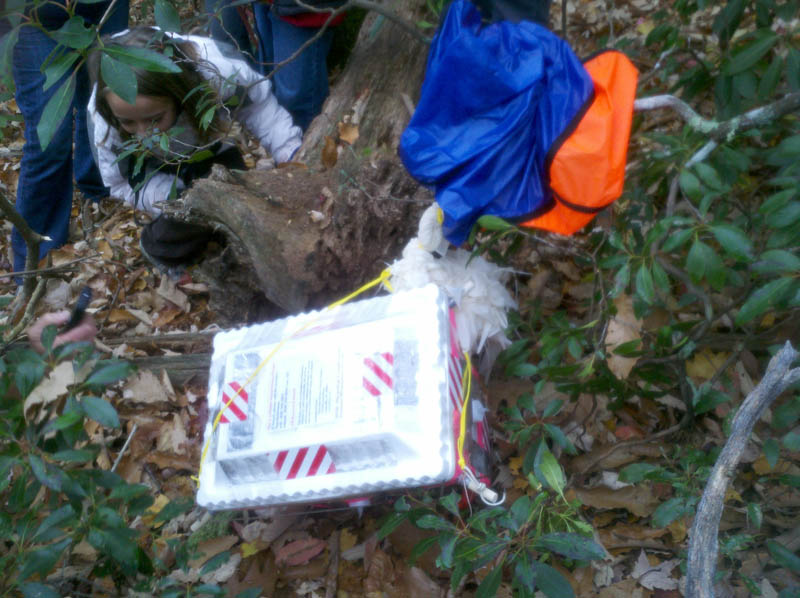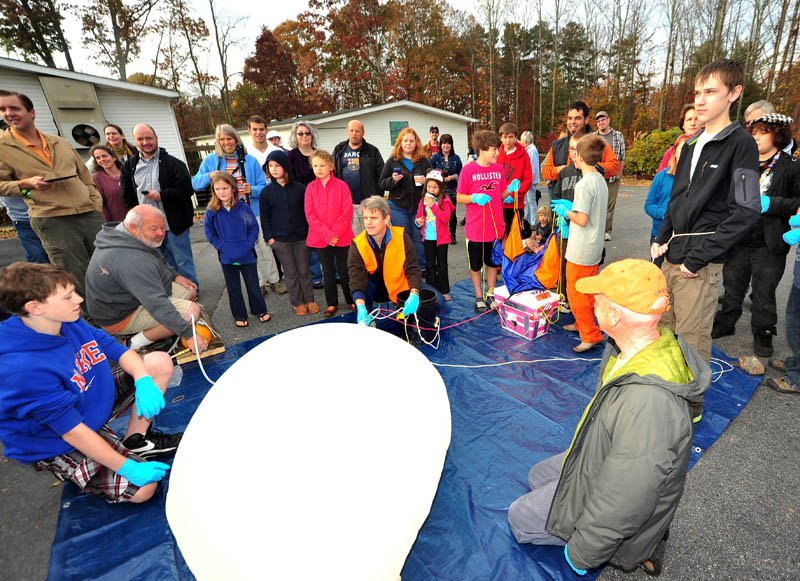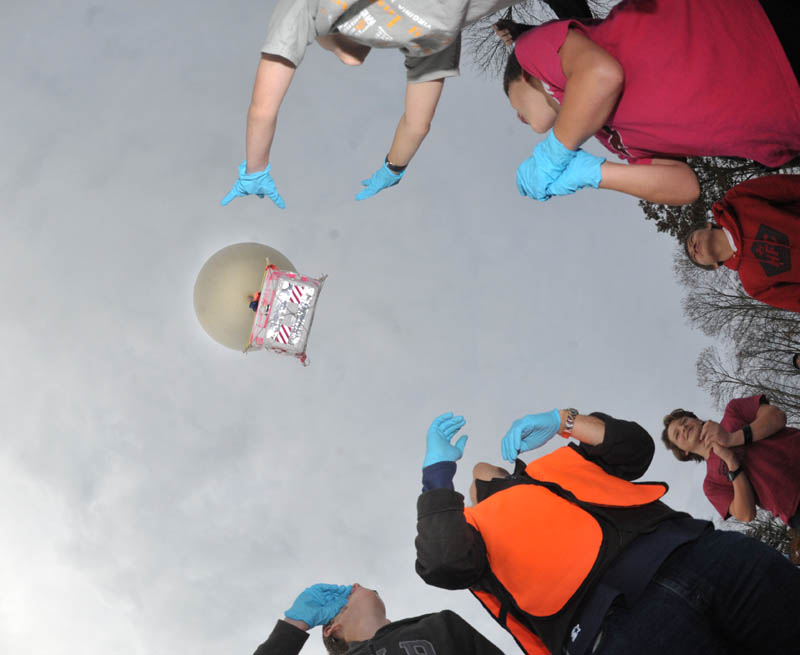Students have found and recovered the near-space payload in good shape near Boone, NC. The video will be taken to a local videographer to process. The data from the GPS will be examined, and results announced soon.

Middle school students at Francine Delany New School have launched a video-camera-equipped weather balloon into what they hope will be near-space. (Photos by Bill Rhodes)
“Our latest models show the balloon being in the air for around 90 minutes, ascending to about 100,000 feet above ground level and then exploding from the pressure and parachuting back to Earth somewhere near Winston-Salem,” said Tom Robertson, math and science teacher at Francine Delany New School. “There are online modeling programs for things like this.”
Things like sending a 6-foot diameter weather balloon into near-space orbit, that is. “Yes, we had to let the FAA know about this,” volunteer balloonist Tom Heck assured parents before the launch. “They have rules for things like this.”
The successful launch on a overcast Saturday morning, Oct 27, was the result of months of research by students, test flights of smaller balloons, fundraising and lots of dreams and energy. “Students had to learn about helium’s properties, the physics of ascent — and of course sudden descent which goes with it, even some history,” said Robertson. Heck adds, “During World War II, the U.S. Government took over all the helium supplies — they thought they would need barrage balloons like in London — and still control getting it in the quantity we needed. Who knew?”
The large H-cylinder of helium was just enough to fill the balloon. As the last gasp of gas came out, there were concerns it was not enough, but the test bucket with rocks was purposely heavier. Once connected to the real payload in a styrofoam cooler, it was clear the project was a go.
The kids from the class gathered round, making sure all the lines were free. The rope tethering the balloon to a student was disconnected, and then — at 9:22 a.m. — there was lift off. The balloon sped skyward and perversely to the south where it disappeared into the clouds.
Students begin to inflate the balloon. They are wearing gloves to prevent oils from their hands getting on the rubber, which could cause an early rupture in the balloon,.

Liftoff! At 09:22 a.m.

Once the camera is retrieved, the video will be edited and presented at a TEDxAsheville session on Nov. 4.




Kids: do NOT pick up what you may think are “balloons” you find lying on the ground, especially if they contain payloads!